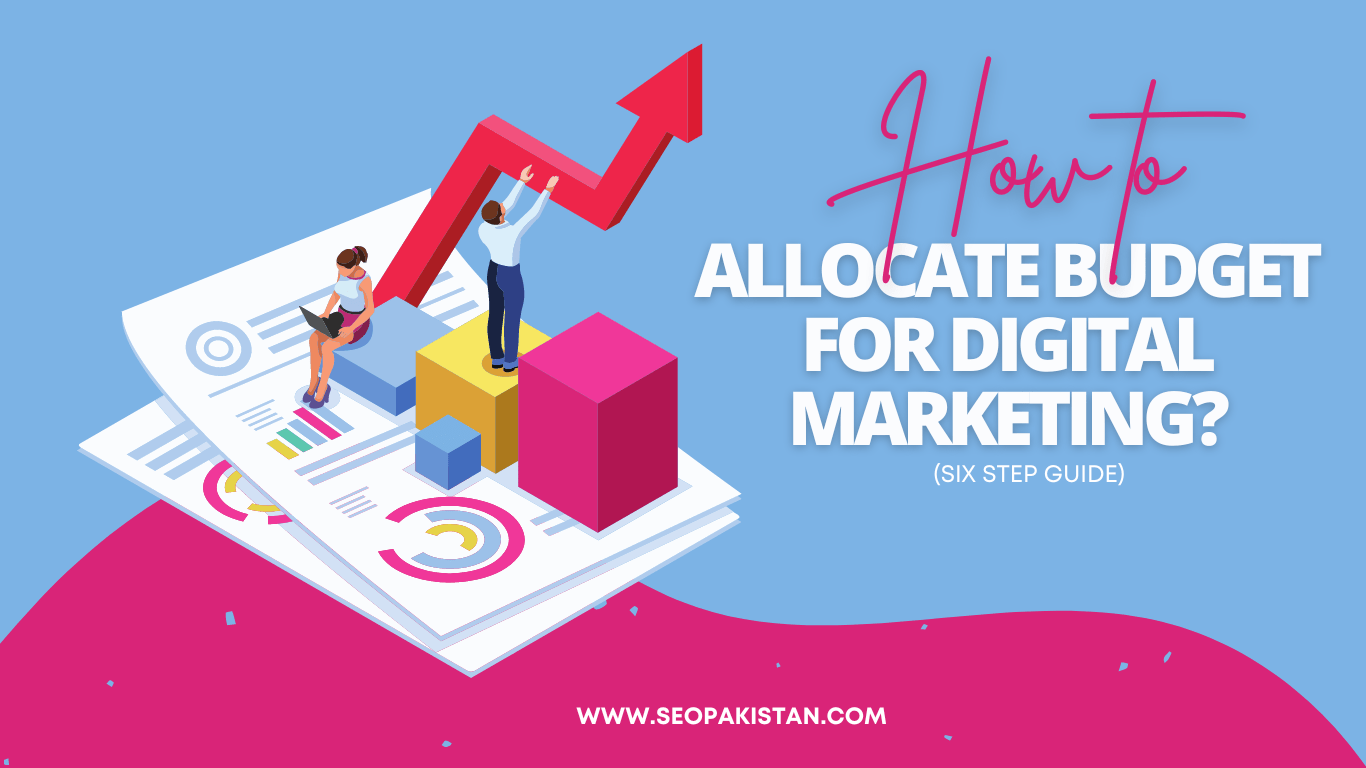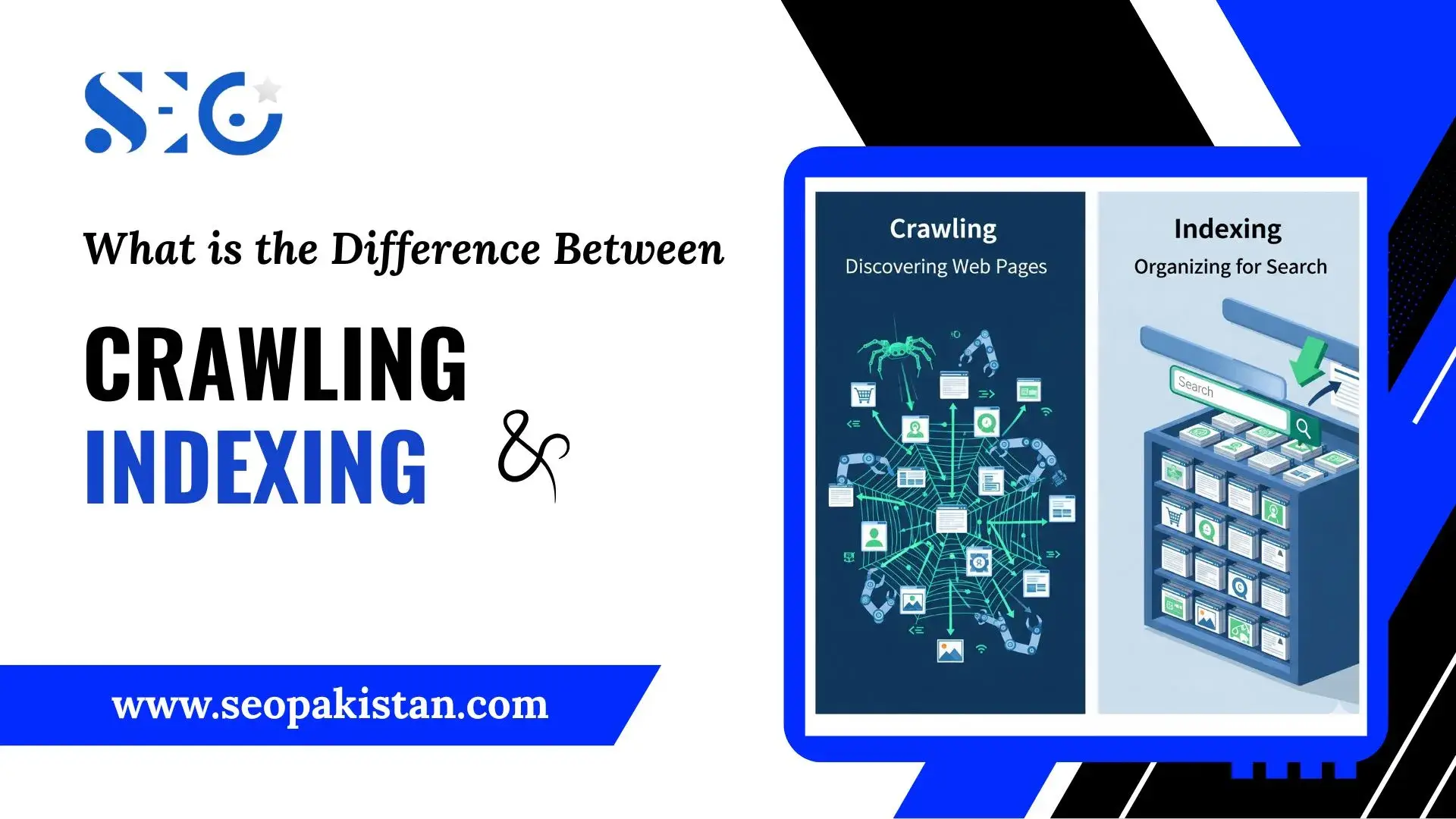
In the constantly changing landscape of digital marketing, an effective budget allocation is the key to success. To get the highest return on investment (ROI), there needs to be a well planned strategy. Investment therefore should be watched carefully to appreciate where they are allocated.
This is what an effective marketing budget covers, acting as a tool to lead marketing efforts towards the achievement of business objectives with the maximum utilization of available resources.
In this blog, we will explore the six step of budget allocation in detail.
Table of Contents (Budget For Digital Marketing)
The Importance of Effective Budget Allocation

In the world of digital media, when consumers are exposed to thousands of brands and campaigns, catchy slogans are not enough; the companies have to put more effort and spend money strategically.
Each dollar invested via digital marketing must be wisely spent such as on the channels and strategies that finally gets the required return on investments.
Whether it is through the best search engine optimization, interacting with social media users, or creating informative content, marketing campaigns depend upon both the sum and the quality of the resources used.
To space out the difficulties of digital marketing budget barricades, businesses require a planned perspective that is from the start of the planning, to implementation and evaluation.
The following six-step process provides a roadmap for creating a digital marketing budget that is both strategic and agile:
Step 1: Understand Your Customers
Knowledge of the target audience is the first and foremost essential for the campaign that is allocating your digital marketing to to be successful. Through examining the demographics, behaviors and preferences, you can then customize for more effective impact.
Demographic Insights:
Understanding the fundamental demographic of your audience, like age, gender, location, and income level, is the first step that will show who your potential clients are. With reports like these, you have the necessary information to customize your content for different interests.
Behavioral Analysis:
On the other hand, the factor of behavior of the customer is important, more than his or her demographics. This involves their online behavior, which involves covering browsing history, their product history i.e. purchase and their interaction with your brand across different channels.
Tracking this kind of behavior can tease out important information like customer tastes, their interests and what bothers them.
Preference Identification:
Every individual has a personality type, and that is visible when a person is shopping, joining a loyalty program, or when watching television. This will help you to adjust and refine your marketing campaigns in order to urge your best clients to buy your products.
It might be personalized Emails, social media interactivity, video marketing or target advertisement.
Utilizing Data Analytics:
Data analytics is a factor that allows you to learn customers on a peculiar level. Through the use of technology like tools and platforms to obtain and analyze data, they can get intelligence on what the customers do and what their preferences are, which can be used for making right decisions.
From website metrics, for instance, to those of social media instruments, data-based decisions help you to reinforce the marketing strategies and get the most measurable results.
Customer-Centric Marketing Strategies:
On the basis of knowledge gained in demographics, behaviors, and preferences of your customers, you can design marketing campaigns that create positive perception among target audience.
Regardless of whether you will concentrate on creating personalized communication, customized offers, or overall enhanced customer experiences, one thing is certain – putting the customer in the center of your marketing strategy will help you to not only build better connections, but also make your brand more relevant for customers.
Step 2: Determine Your Marketing Budget
Digital marketing budgeting is a challenging task that involves having to factor in a number of factors to help get the right success.
Through a rigorous analysis of business targets as well as the competition traits and using a reliable marketing budget tracker, companies will operate the typical marketing budget amounting process proficiently and keep a close track of progress.
Business Goals:
The core message of the digital marketing process is to establish clearly the business objectives that are specific, measurable, attainable, and time-related. The objective could be to influence either brand awareness, generate website traffic, generate leads or cause a sale boost and managing the digital marketing budget allocation, with that on the focus will ensure that available resources are utilized where impact is maximum.
Industry Benchmarks:
Appreciating relevant industry standards and benchmarks gives a vendor the insight on how to correctly allocate funds based on project objectives. Arguably, a skillful approach will be to evaluate competitors’ spending strategy and achieve an understanding of what works and what doesn’t, in real life.
They assist in assessing how effective businesses are relative to their competitors; should some areas of improvement be needed, investment might have to be done in order to get a competitive edge.
Marketing Budget Tracker:
The budget tracker for marketing is imperative to the purpose of learning how the marketing resources can be allocated better and tracked. This tool allows businesses to have close tracking of expenditure across different channels such campaigns and time frames and hence enabling them to observe the constraints set on the expenditure. By documenting meticulously with regards to spending and performance measures common digital marketing expenses, businesses can pick up such trends, evaluate return on investment and make right decisions for budget allocation for in coming fiscal years.
Efficient Allocation:
In combination with a budget tracker, companies are able to allocate their resources more tactically, emphasising above average efficiency through where they spend most money.
Through using the historical data and performance indicators, they will be able to stumble on areas that are not functioning effectively and move the funds to initiatives that need them.
Monitoring and Adjusting:
A recurrent tracking of campaign performance is a must to assess the campaign’s efficiency and discover any exit ways for optimal improvement.
With a media and marketing spend tracker in place, not only do you get to monitor the progress of major marketing metrics in real-time but also make necessary adjustments to specific channels of promoting your products and services.
Step 3: Determine the Appropriate Channels

In today’s changeable digital world, businesses have a wide selection of marketing channels to choose from. Every channel has its own qualities and is used for various groups of people.
Hence, if a channel of communication is not identified can be highly counterproductive, so thorough evaluation to identify the best possible communication channels that appeal to your target customers must be conducted.
Audience Reach and Engagement:
To start with, contemplate the spread and level of interaction for each channel. For instance, paying to show up when users search for specific goods or services gives a company a high priority target list of people who are looking for just what they are selling.
Although, paid social media campaigns allow for in-depth audience categorizing while the general audience base has their interests and behaviors evaluated making conversation possible beyond the bounds of the general audience.
Return on Investment (ROI):
ROI is a key important factor for making channel selection. Analyze past campaining data to find out which channels have shown the highest return on investment.
By way of this assessment you may determine the channels that generate you the biggest ROIs and work out the marketing budget optimally.
Strategic Objectives and Audience Concerns:
Match content/channel selection with business targets and consumer choices. Take the example of a brand that is seeking to hike its brand awareness among millennials; investing in content marketing and platforms that are high among millenials such as Instagram and YouTube would be strategic.
Knowing the audience’s needs guarantees that successful marketing strategy and campaigns are compatible with the segment of the market which is the main consumers, therefore, gives a higher impact.
Allocating Budget Across Channels:
Weigh on the channels and direct advertising budgets that fit within the plan and performance parameters as well as brand strategies goals. First and foremost, put to good use the channels that not only will complement the highest reach and engagement but will also bring the maximum value among all of them in return, while at the same time, do not forget about the preferences and behaviors of your target audience.
Step 4: Review Previous Performance and Set Clear Goals
Examining the outcomes of the implemented digital marketing campaigns in the past is a must for the purpose of discovering what did well and what has to be worked on. In doing that, they can explore characteristics like engagement rates, conversion percentages, return on investment (ROI) and cost per acquisition (CPA) and draw conclusions for their future endeavors.
This study may cover the range of communication channels used in the previous advertising campaigns like paid search advertising, social media marketing, content marketing and email marketing.
Identifying Effective Strategies:
In doing so, marketers are able to dig out the most efficient strategies that ultimately pushed the core marketing objectives to the overall highest degree of ROI. Resulting from that could be the number of the best ads, the audience targeting methods which are efficient and the kind of content or messaging that works.
Through using these strategies that have been recognized, marketers can replicate and extend the possibilities of their future campaigns to achieve bigger outcomes.
Areas for Improvement:
Besides identifying some of the accomplishments, scrutinizing campaign achievement also meant that some of the sections which did not work out and missed the targets were detected. It can be in terms of either not getting the engagement that you desire, a high bounce , or making advertising campaigns that do not at all result in leads and sales.
It is through acknowledging these deficiencies that the marketer is able to build the campaign that is most effective and generates the best return on investment by being able to address these shortfalls for future campaigns.
Step 5: Prove Your Marketing Works
The use of Customer Relationship Management (CRM) systems by digital marketers is necessary, if you want to gain insight into the success and failure of a marketing campaign. Such systems offer a single pane of glass to manage the whole customer lifecycle, to store critically useful data, and to gauge impact of marketing activities across the organization.
With a CRM system integration into digital marketing channels of e.g. newsletter campaigns or social media ads, marketers get to understand consumers’ patterns, their interests, and engagement levels.
Marketing Data Warehouses for Comprehensive Analysis:
The fact that marketing data warehouses are the most capable for building a pool of various sources, such as CRM systems, advertising systems, and website analytical tools, makes them rather important.
That is where these centralized repositories come into the picture. This service helps marketers to generate overall analysis as well as analysis by multi-dimensional parameters such demographics, geography, and attribution.
Through the act of combining and standardising user data that provide a single depiction, data warehouses for the marketing industry makes deeper understanding of marketing effectiveness and productivity possible.
Demonstrating ROI through Data-Driven Insights:
One of the main tasks in introducing CRM tools and marketing data warehouses is to show how investments have brought benefit and value by means of data-driven knowledge and metrics.
Marketers must exploit KPIs e.g. customer acquisition cost (CAC), customer lifetime value (CLV), and conversion rates in order to qualify the relevance of their marketing investments in the growth of the business and revenue generation.
These data-driven insights, in addition to marketers’ marketing strategies’ effectiveness validation and future marketing budget allocation too, also prove the effectiveness of data-driven insights.
Step 6: Budgeting for the Future Digital Advertising

In an increasingly dynamic digital space which is constantly awe-inspiring, a marketer should constantly be informed with the latest trends and innovations in digital advertising. Another technological trend is artificial intelligence and machine learning which are used to create more accurate audience targeting, individual messages, and adjustment for dynamic purposes.
A great investment that will show good performance and drive better income will be to implement AI-advertising technologies.
Anticipating Changes in Consumer Behavior:
Recognizing that in the end, buyers will be buyers, whether times are stable or not, is the primary in understanding which advertising trends will come as time goes by. With the growing use of mobile technology and the advancement of social commerce, as more people purchase online, brands need to transform the style of their marketing to communicate to customers where they are.
Many brands are learning not to just play advertising notes but to rather build real connections with their audience via audience-generated content and influencer marketing and partnerships.
Staying Ahead of the Competition:
On a regular basis, the company should be monitoring the dynamics governing the markets and developing strategies based on the preferences of the consumers so that it would be possible to be proactive by constantly adjusting a digital marketing strategy and budget as a response to the competition and to promote sustainable growth in the challenging different environment of the digital world.
Conclusion:
To sum up, allocating the budget wisely for digital marketing is an important step for kickstarting a business in the modern marketplaces. Through an in-depth understanding of the six measures of actions shown in this guide, businesses can successfully delegate resources, identify the best audience targets, and track the impact of their marketing efforts.
Knowing customers’ life styles and worldviews, having concise aims and using data-driven insights as a tool are the basic issues in this embodiment.
Through consistently monitoring performance, responding to the most cutting-edge trends, and showing ROAs, organizations can maximize their digital marketing budgets perfectly.
The incorporation of a holistic budget approach to this new era of marketing will empower the business to realize prosperity and profitability, and go beyond and beyond to achieve these goals.













